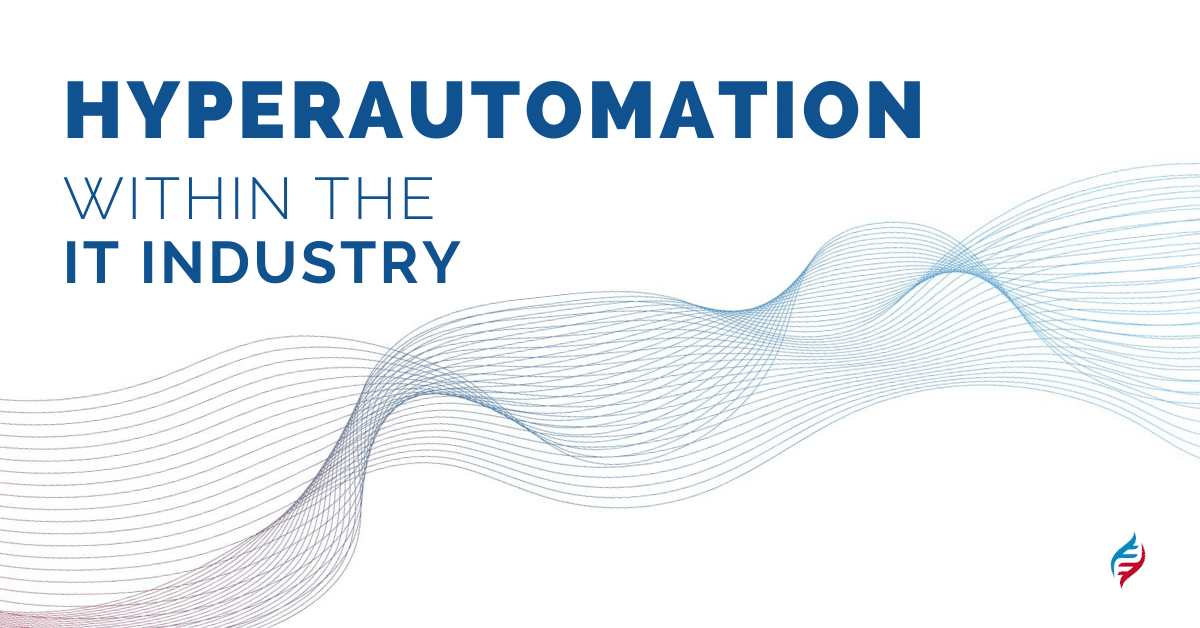IT has always been a fast-growing industry in terms of the complexity and evolution of its products – and here’s where how hyperautomation comes into play. Looking at the current scenario, it is seen that, unlike other industries, IT have certain traits which distinguish itself from others:
The software business is all about “speed”, where speed becomes important not only to ensure quality but also on-time delivery. The concept of agile methodologies came up as a solution to this problem. Agile development made sure that developers were informed of the changes that they need to incorporate in order for the code to work even faster and better. In today’s world with mobile phones having more processing power than laptops had 10 years ago, we see very complex systems evolving into our day-to-day life, and many new products are being sold on a daily basis.
Moreover, another factor that the IT industry needs to look at is the growth of competition among different companies in this field. With huge investment being put by companies towards research and development, many ideas have started to pop up which are all based on getting something new out there in the fast-evolving market.
How hyperautomation impacts the IT industry
It is a question that we hear quite often from managers and executives who are well aware of the fact that it is essential to reduce costs by cutting out staff but still want to hire more people. They know that automation is one way to do this, but they also worry about how soon their business will be able to manage without them.
That makes sense since they’ve worked hard on their career and don’t want to give up all those years with no return on investment. So why does it seem like getting rid of people when automation can do all the work?
The truth is that automation has been around for a long time, and it’s cost a lot of jobs across the board. From industrial robots to self-checkout at grocery stores, workers have been losing their employment for decades now. But this job loss is different than what we’re seeing today with hyperautomation, which isn’t just replacing one worker with another or even 10 others.
The good news is that this isn’t something we’re changing overnight. Automation has been around for decades and it’s still taking time to fully automate entire processes and jobs, so there will be plenty of time to prepare while the gains continue to come in from hyperautomation.
So what do companies need to do to prepare? The first thing is to recognize that automation won’t lead the way forever. It’s a stepping stone with the goal of letting us offload work onto artificial intelligence until we can get rid of all those messy humans entirely. Of course, this is still a long way off since AI just doesn’t have many tasks they can handle independently yet, but it’s coming.
The second thing companies need to do is ensure that they aren’t paying people for work they don’t do. Many already have the technology in place to manage this, but more than likely there are still gaps where managers and executives are not getting a real view of how their staff works and what can be automated to drive efficiency. If you give your team autonomy without being able to see where they waste time or fall down as well as help them fill those gaps, then you’re just setting yourself up for failure when automation takes over the job.
How hyperautomation works?
In simple terms, ‘HyperAutomation’ means increasing the efficiency of a process by integrating it with automation technology. It can also be defined as an innovative hybrid software-hardware solution that automates manual and low-value processes thereby eliminating errors and drastically reducing costs with minimum human intervention or training.
The two most important factors for successful automation optimization are quality and time management. If you want more than a 100% increase in production without increasing headcount then hyperautomation is the way to go.
Hyperautomation works very well in situations that call for quality and cost optimization. Nowadays, there are many automation vendors that have been offering hardware-enhanced solutions with various options; one of these being hyperautomation.
How can companies benefit from the technology?
It is very important for businesses to save time and resources. Hyperautomation can help them in this regard. Companies get access to a large number of IT services through hyperautomation. All the tasks are performed without errors by skilled personnel employed there.
Moreover, with the help of advanced automation, companies can reach global markets easily and provide their products to people at affordable prices which is not possible otherwise. This will contribute a lot towards the success of the business. With the help of hyperautomation, companies can schedule different operations so that they are completed well on time even if employees go on leave or are absent from work due to some other reason.
If you compare an automated system with a manual one then it becomes more efficient as requires lesser resources to operate. For example, if there is a need for an extra resource then the automated system will adjust automatically but in the case of a manual system, the task cannot be completed.
The support staff also get time to work on other projects because the automated system performs their assigned jobs well. Moreover, with superior technology and new techniques cloud computing has made it possible for companies to manage things online which is quite easy now.
Even though these benefits are very significant yet there are some drawbacks of hyperautomation as well i.e., only skilled technicians can perform such tasks, they cost more than manual systems and might not work properly sometimes due to technical glitches or human errors. Therefore companies should consider both its advantages and disadvantages before deciding whether to go for hyperautomation or not.
Automation has been making more and more of an impact on the world as time progresses, but it’s far from done revolutionizing various industries. Automated systems are already in place that can do a number of jobs once handled by humans, but they are still not flawless. This is where hyperautomation comes in, which is essentially a way to make automated systems more efficient by integrating software with hardware.
Automatic tasks that are critical for businesses can be performed quickly and accurately with the help of this technology. Humans will spend less time doing what machines are better suited for so they have more free time for creative and productive tasks. In addition, getting high levels of accuracy without requiring a lot of training is yet another benefit that comes with hyperautomation.
Although there are some disadvantages related to automation, for example, it requires skilled technicians or technical support and might not perform well due to human errors, but it cannot be denied the fact that this technology is helping businesses in various ways.
About Asignet
Asignet is the technology and automation leader of Telcom & IT Lifecycle Expenses Management utilizing its patented RPA Robot process automation platform. The Asignet platform builds and monitors telecom, SaaS, Cloud, IT billing, inventory, and usage, helping global enterprises to optimize, secure, and manage all IT assets and its expenses.
Contact us for more information.






